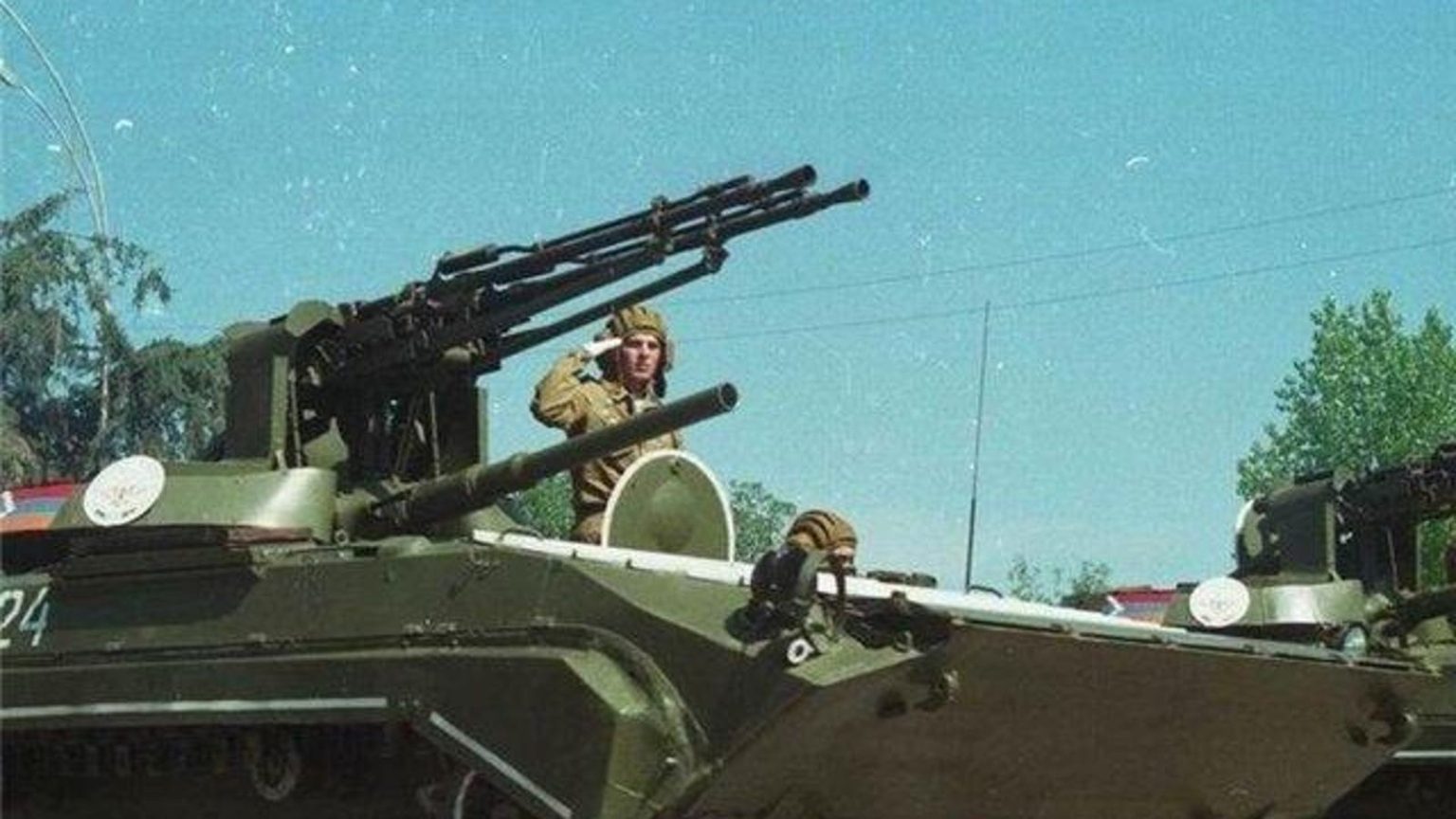Twenty-two months into Russia’s wider war on Ukraine, both sides are running desperately low on purpose-made, fully-integrated infantry fighting vehicles. So both sides are creating “new” IFVs by mixing and matching whatever hulls and guns they have lying around.
Almost all of these vehicular Frankenstein’s monsters are awkward and ugly. But that doesn’t necessarily mean they all don’t work. Consider one of the latest, and ungainliest, of Russia’s Frankenvehicles: the BMP-1-ZU-23.
This monstrosity combines a 1960s-vintage BMP-1 IFV with a ZU-23-2 twin autocannon of similar age. The result is a 15-ton infantry-support vehicle with two very different weapons: one for blasting vehicles at short range; another for gunning down infantry and drones, or for harrying vehicles at longer range.
The BMP-1-ZU-23 is imbalanced, and it can’t transport troops like a vanilla BMP-1 can do. But as mobile firepower, it could help to meet the Russian army’s urgent need for assault-support and air-defense against drones.
It perhaps was inevitable that Russian technicians would bolt a ZU-23-2 mount with twin, traversing 23-millimeter autocannons onto a tracked BMP-1. There are potentially thousands of old ZU-23-2s and BMP-1s in storage across Russia.
But it wasn’t until last month that the first video of a BMP-1-ZU-23 appeared online. We haven’t yet seen the do-it-yourself vehicle in action, but we might soon. Russian forces in Ukraine have lost thousands of fighting vehicles; they need every replacement IFV and infantry-support vehicle they can get their hands on.
It might be tempting to mock the Russians for bolting a one-ton, manually-aimed ZU-23 mount onto the passenger compartment of a 14-ton vehicle whose suspension and transmission might not last long under the additional strain.
After all, many previous Russian—and Ukrainian—Frankenvehicles sound better in concept than they actually perform in combat. Those MT-LB armored tractors the Russians armed with surplus 2M-3 naval autocannon mounts appear to be nearly worthless, for example.
The badly-integrated 2M-3 vibrates a lot when its twin 25-millimeter cannons fire, throwing off the cannons’ accuracy and reducing their effective range to perhaps a few hundred yards. But the thinly-armored MT-LBs probably can’t get close enough to enemy positions to bring such a short-range weapons mount to bear.
It’s not for no reason that some Russian units held back their MT-LB-2M-3s and assigned them to the short-range air-defense of rear-area civilian construction crews. Sure, they might only work in daylight and they lack radars or other sensors to guide their fire, but their gunners at least can spray and pray and maybe hit incoming drones. And no one would be shooting back at them.
Now consider the BMP-1-ZU-23. A 15-ton BMP is a stabler firing platform than an 11-ton MT-LB is. And while a BMP’s armor is thin at just 30 millimeters or so, it’s three times thicker than an MT-LB’s armor is.
Morever, the BMP-1-ZU-23 retains its turret-mounted 73-millimeter low-pressure gun, and adds the twin autocannons as secondary armament. The weapons complement each other.
The BMP’s 2A28 main gun fires an eight-pound shell at a rate of eight rounds per minute. But to keep the BMP’s turret simple and light, Soviet engineers designed the 2A28 for minimal pressure and recoil. So its shell is slow, with a peak velocity of maybe 600 yards a second, compared to the 1,000 yards a second the ZU-23-2’s half-pound rounds can achieve at a firing rate of 400 rounds per minute.
The low-pressure 2A28 is accurate only at short range. Past 800 yards, it’s probably not going to hit anything its gunner aims at. By contrast, a ZU-23-2 is accurate out to 2,500 yards, albeit with less penetrative power than a 2A28 achieves at its short optimal range.
It’s obvious how the weapons could work together. A BMP-1-ZU-23’s two gunners would aim the autocannons at enemy infantry and vehicles in order to suppress them until the vehicle is close enough for the gunners also to bring to bear the low-pressure cannon.
Meanwhile, the ZU-23-2 also offers some protection against the ever-present drones that increasingly are the most serious threat to armored vehicles in Ukraine.
Armenian engineers recognized this potential gun-synergy back in the late 1990s or early 2000s. They too bolted ZU-23-2s to BMP-1s to create twin-gun Frankenvehicles. But they made the mistake of attaching the autocannons to the top of the vehicle’s turret, optimistically assuming that a single gunner could operate both weapons.
As it turned out, each gun needed its own operator. Stijn Mitzer and Joost Oliemans—analysts with Oryx, an open-source intelligence collective—described the Armenian vehicle as “imposing in its complexity yet surprisingly lacking in utility.”
The Russian version of the same vehicle is less complex and thus more useful, in theory. The real test will be actual combat, of course.
Read the full article here





